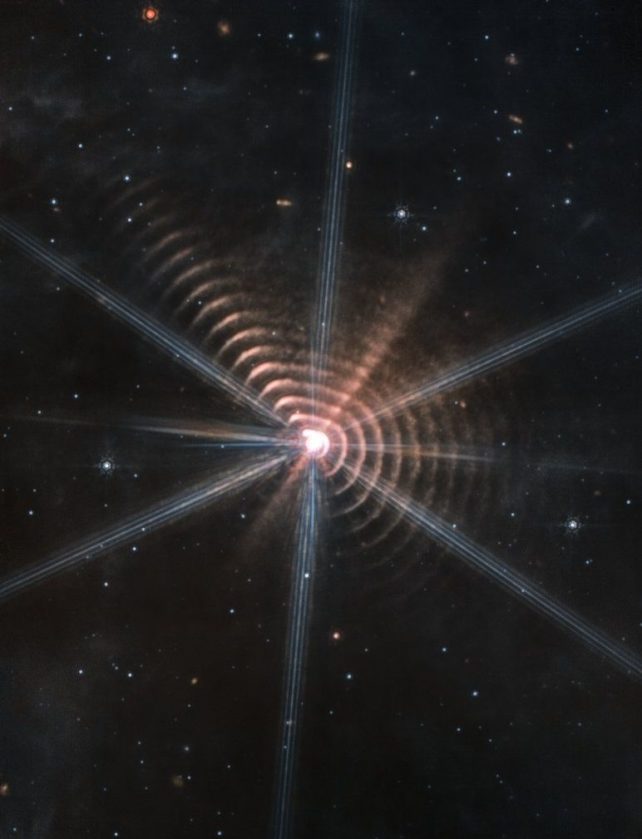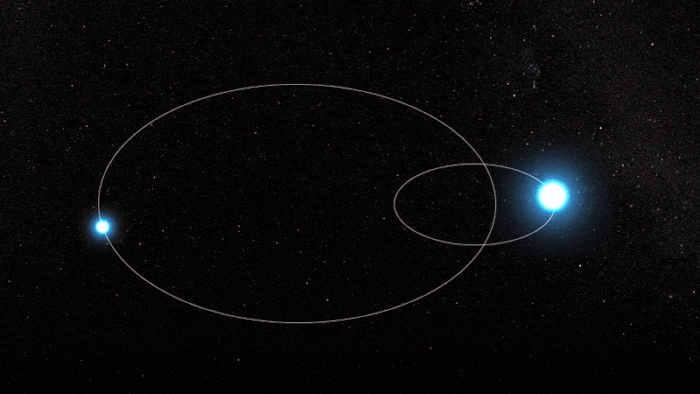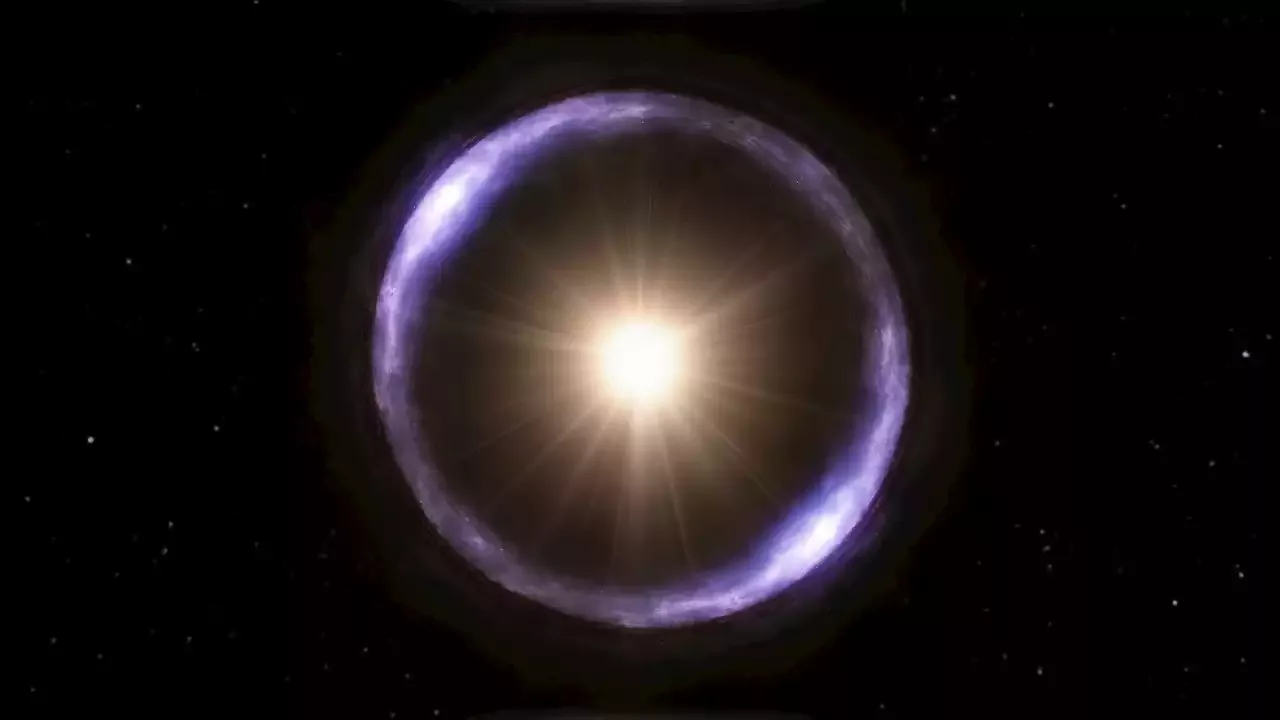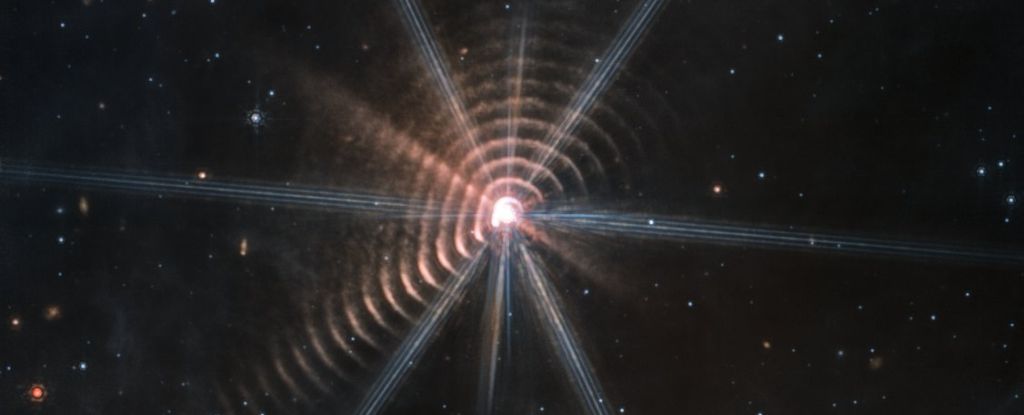The recent images captured by the James Webb Space Telescope of a binary pair of rare stars in the constellation of Cygnus are truly remarkable. The concentric rings of light radiating outward from the stars are not an artifact of the telescope, but a real phenomenon caused by periodic eruptions of dust expanding out in shells into the space around the stars.
The unique interactions between these binary stars produce these precise eruptions of dust, which glow in the infrared and have allowed the Webb telescope’s MIRI instrument to capture them in exquisite detail. These observations provide valuable insights into the dynamics of binary star systems and the mechanisms that produce these beautiful and complex structures.
The discovery of this binary pair of stars and their concentric rings of light is just one example of the wonders that exist in our universe, and the continued exploration and study of space will undoubtedly reveal more fascinating phenomena for us to marvel at and better understand.

The star at the center of the concentric rings of light observed by the James Webb Space Telescope is a colliding wind binary, consisting of a rare Wolf-Rayet star called WR 140, and a hot, massive O-type star companion. Wolf-Rayet stars are very luminous and hot, and are at the end of their main-sequence lifespan. They are also depleted in hydrogen and rich in nitrogen or carbon, and lose mass at a very high rate.
The observation of this colliding wind binary system provides valuable insights into the dynamics of binary star systems and the mechanisms that produce these stunning structures. These observations also highlight the unique capabilities of the James Webb Space Telescope, and the potential for this instrument to reveal even more wonders and mysteries of our universe.
As we continue to explore and study the vast expanse of space, discoveries like this remind us of the incredible complexity and beauty of the universe, and the need for continued research and exploration to better understand our place within it.

The WR 140 system, consisting of a rare Wolf-Rayet star and a hot, massive O-type star companion, has a particularly interesting orbit that produces the stunning concentric rings of light observed by the James Webb Space Telescope. The elliptical orbit of the two stars means that they describe ovals around each other, with a point at which they are farthest apart and a point at which they are closest to each other.
When the two stars reach their closest point, known as periastron, their powerful winds collide, producing shocks in the material around the stars and generating energetic radiation such as X-rays. This collision also induces episodes of dust formation as the material in the colliding stellar wind cools.
The animation provided gives a visual representation of the process, showing the colliding winds and resulting dust formation in the system from a top-down perspective. These observations provide valuable insights into the dynamics of binary star systems and the mechanisms that produce these beautiful and complex structures.
As we continue to explore and study the vast expanse of space, discoveries like this remind us of the incredible complexity and beauty of the universe, and the need for continued research and exploration to better understand our place within it.

The concentric rings of light observed around the WR 140 binary system by the James Webb Space Telescope are actually partial dust shells, produced when the powerful winds of the two stars collide at periastron. The dust is primarily made of carbon, which absorbs ultraviolet light from the stars and re-emits thermal radiation that can be observed in infrared wavelengths.
As the dust is blown outward by the stellar winds, the partial shells expand and cool, losing heat and density over time. The visible edges of each dust shell are denser concentrations of material, making them more visible to observation.

The binary star’s orbit has a 7.94-year period, meaning that the wind collision and dust production occur every 7.94 years like clockwork. By counting the visible rings of the nebula, astronomers can determine the age of the outermost dust shell and gain insights into the dynamics of the binary system.
The observation of WR 140 by the James Webb Space Telescope was requested by a team of astrophysicists, who are preparing a paper on the observations. This exciting discovery provides valuable insights into the complex and fascinating dynamics of binary star systems, and highlights the potential of the James Webb Space Telescope to reveal even more wonders and mysteries of our universe.








